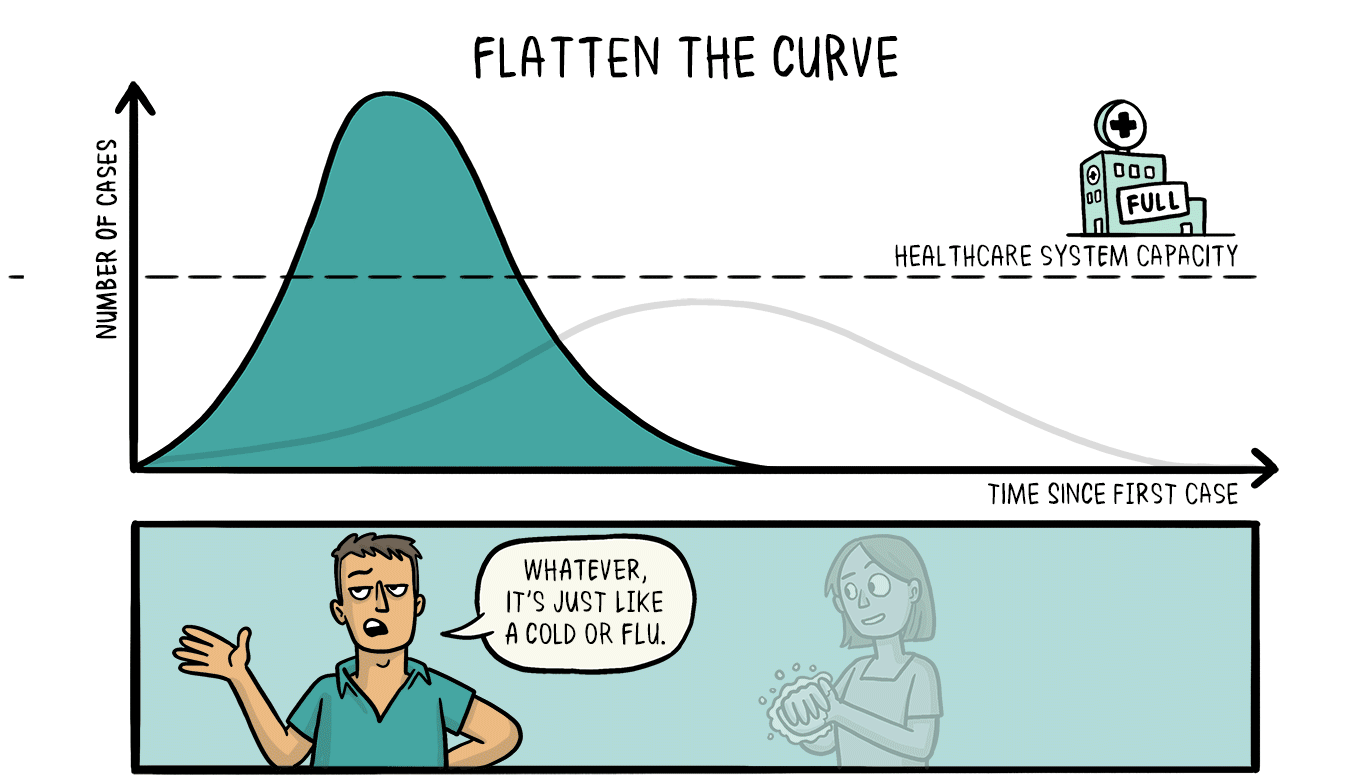Social Distancing Means Flattening the Curve and Not Overwhelming the Healthcare System







Social distancing can help slow the spread of communicable diseases like coronavirus. Slowing the spread means less pressure on the healthcare system. Less pressure on the healthcare system means it can do a better job of delivering care to people who are sick.[1][2][3][4][5][6]

Flatten the curve gif. Wikimedia commons.
In other words, using social distancing to slow the spread of diseases isn’t just about keeping total infections low, it is about stopping everyone from being infected at once and overwhelming the healthcare system.
Overwhelmed healthcare systems can’t properly deliver care to the sick, and they can struggle to deliver the care they normally otherwise would.
Given these facts, you’ll hear a lot about social distancing and “flattening the curve” when you hear about the coronavirus. These two separate points are both important.
Not only can distancing help you to not get sick and to avoid getting others sick, distancing on a large scale helps to ensure that our healthcare system can keep working while inevitably people do get sick.
To learn more about flattening the curve using social distancing, check out this article from WashingtonPost.
For more on social distancing, see our article on Social Distancing on our sister site FactMyth.com.
Coronavirus outbreak: As cases rise, how will Canada “flatten the curve”?.- It’s Time To Get Serious About Social Distancing. Here’s How. Npr.org.
- Communicable Disease. acphd.org.
- Coronavirus, Social Distancing and Self Quarantine. Hopkinsmedicine.org.
- Coronavirus Disease 2019 (COVID-19) – How It Spreads. Cdc.gov.
- Public health interventions and epidemic intensity during the 1918 influenza pandemic. Pnas.org.
- WHAT IS SOCIAL DISTANCING AND HOW CAN IT SLOW THE SPREAD OF COVID-19? Jhu.edu.